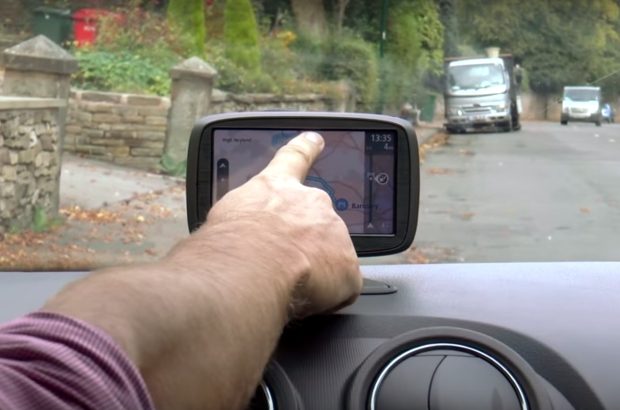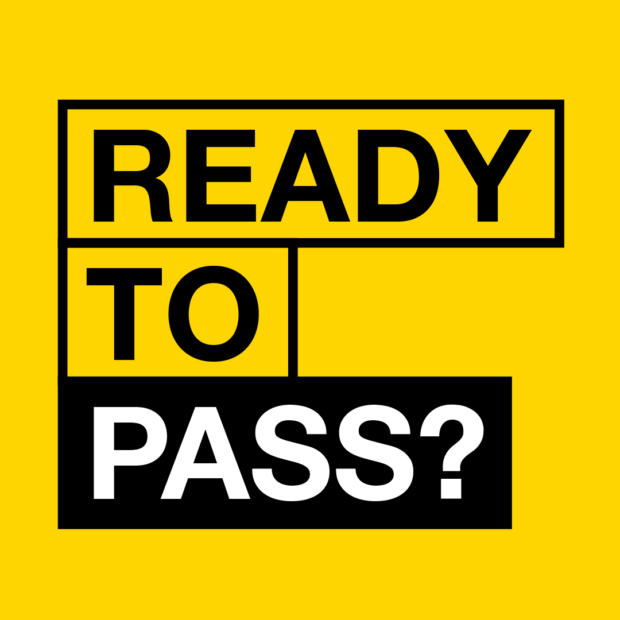 Passing your driving test is important to everyone. But it can be especially important, and even life changing, to someone with a disability as it can really help give them their independence. As Chief Driving Examiner, I want to give everyone who’s able to drive safely the opportunity to pass their driving test.
Passing your driving test is important to everyone. But it can be especially important, and even life changing, to someone with a disability as it can really help give them their independence. As Chief Driving Examiner, I want to give everyone who’s able to drive safely the opportunity to pass their driving test.
With around 2 months to go before the new test, and National Dyslexia Awareness Week having taken place recently (2 to 8 October), I wanted to let you know how we’re continuing to support your pupils that have a disability when taking the new-style test.
Positive feedback from the industry
We’ve worked with several organisations to trial the changes, including the British Deaf Association, the Dyspraxia Foundation and Disabled Motoring UK, but not everyone in the industry will have had the opportunity to see the new test in action yet.
After receiving a letter from the ADI National Joint Council (ADINJC) about how the changes will affect people with a disability, we invited Peter Scott (Chairman of the Leeds group ADINJC) to see how the new test will work. We also gave Peter the opportunity to ask us questions on how we’ll be supporting pupils with a disability.
Meeting the DVSA and challenging them … especially with the introduction of the sat nav and its potential to distract or be difficult to use, was of great concern to me.
All my fears were very easily diffused during a fairly lengthy discussion on the subject
Download Peter's full report on the changes to the driving test (PDF, 271KB)
Using a sat nav during the test
As you know, we’ll be using a TomTom Start 52 model sat nav during the test. We chose this model of sat nav because of how adaptable it is. The examiner will be able to change the colour, contrast, volume on the sat nav to make sure it’s suitable for everyone.
If you think your pupil will need to change the sat nav layout, you’ll need to set up a meeting with your LDTM before the driving test.
You’ll be able to discuss what personalised settings your pupil will need, and agree these with your LDTM. On the day of the driving test, you should arrive earlier than normal with a copy of the agreed setting requirements. Thi will ll help your pupil's test run smoothly.
Communicating with your examiner
If your pupil has a reading disability or a learning disability such as dyslexia we understand they might have trouble following verbal instructions. And, some of you have asked if the examiner will still be able to change the way they communicate with your pupil.
I wanted to reassure you that this will still be the case. So, for example, your pupil can still ask the examiner to give verbal instructions 2 at a time, or refer to landmarks such as petrol stations and shops instead.
We can also give you written place names, refer to left and right as “my side” and “your side” or help your pupil visualise their destination in the independent driving part of the test.
Similarly, if your pupil has trouble reading out aloud, they’ll be able to write down the number plate instead of saying it out aloud to the examiner.
We also want to emphasise that we will only ask a “show me” question which we think the candidate can demonstrate safely whilst on the move.
Accessibility of the test centre
Most driving test centres are now accessible by ramp, but where that’s not possible, we’ll arrange for the examiner to meet you and your pupil in the test car. Your pupil can also request to meet your examiner in the test car if it suits your needs better anyway.
Using an adapted car on the new driving test is still fine as long as it meets the rules on using your own car. Your driving examiner may spend a few minutes asking you questions to help them familiarise themselves with your car.
Finally, I wanted to let you know that the Highway Code is available on YouTube in British Sign Language. You’re welcome to link to these, embed them on your websites or share them with your pupils to help all drivers through a lifetime of safe driving.
I hope this has helped clear up any questions you might have about how the new test will work if your pupil has a disability.

21 comments
Comment by Steven G posted on
Interesting article and it appears that the DVLA is trying to consider disability needs.
However as a deaf person I would still feel anxious about having to use a sat nav during a test as these gadgets give out audio instructions, which it may not be possible to hear clearly while driving.
Not everyone even needs a sat nav - many (deaf) people look at the map before-hand and then memorise the whole journey without ever needing to review the map again. Therefore many drivers don't even need a sat nav and do NOT consider it to be vital/critical to the driving experience at all. Learner drivers should not be penalised for having to listen to a sat nav they cannot hear.
However in normal driving environment it is actually not necessary to hear anything, as 100% of driving is based on vision.
Is the sat nav part of the test optional?
If not will it be possible to do the test with the Sat nav audio switched off so that the driver can rely solely on the visual picture?
What specifically are they expected to do with the sat nav during the test?
Comment by Peter Cary posted on
Peter Scott’s report does not read as though many Special Needs candidates were actually tested during the trials..
I believe that only one deaf person was involved with the trials and they were a FLH journalist not the typical deaf candidate who may well be only able to communicate in BSL..
I am very worried that the DVSA apparently did not test the TomTom Start 25 at all during the trials and that the display can be very difficult to actually see in many lighting conditions, all roads are shown as black except when a route is chosen and that is highlighted in a colour but again can apparently be “washed out”if my personal Start 25 is not faulty.
At the moment my pupils are listening to the TomTom but looking at my Garmin display for the road layout as this does not “fade out” or reflect badly both faults I have on my TomTom
I have not updated my unit regarding the roundabout directions but I believe these may have been changed today but from comments I have read on forums the directions could still be confusing for many on the Autistic Spectrum or English not First Language with directions to cross the roundabout 2nd exit.
Comment by Graham Carroll posted on
Your/side /my side?? I would have thought knowing your left and right, would at least be a basic requirement to take a driving test. After all coming off a ferry for example in calais, the road sign won't say ' drive on yourside'
Comment by Mary posted on
I suffer from dyslexia. I was not aware that I could have received extra help to pass my test.
Comment by Samuel A Kargbo posted on
That is good for the use of sat because so many drivers can't use sat and with sat you can be more comfortable driving long distances without stopping to read a map mostly at night.
Comment by Mrs Nyla Ahmed posted on
Hello I attended a meeting in Rochdale, driving examiners were also present and I was told at the meeting the dvsa would be using garmin sat nav. In this blog it says tom tom. Please could you clarify as to which sat nav will be used.
Thank you
Comment by Olivia (DVSA) posted on
Hi Nyla,
The sat nav we'll be using is the TomTom Start 52.
Thanks,
Olivia
Comment by Peter Evans posted on
Very good in depth report.
Comment by Alan Bayes posted on
Will the driving into a bay exercise be between 2 cars, next to one or with no cars either side. Also will it be done in any carpark or at the test center.
Thank you
Alan Bayes
Driving instructor
Comment by Raymond McElroy posted on
Thank you.. I found this helpful
Comment by David Chamberlain posted on
Is the SatNav to be placed in a safe position on the windscreen? People often place them restricting their view of pedestrions that may step out into the road.
Comment by Olivia (DVSA) posted on
Hi David,
The sat nav will be secured to the dashboard using a dash mat.
Thanks,
Olivia
Comment by Mark posted on
What about if it doesn't fit on the dash are you going to use the window
Comment by John Cerpnjak posted on
Excellent, clear and in depth.
Comment by Ian Mounsey posted on
I would like to know what settings the sat nav Will be set to for test eco,fastest,shortest.
Comment by Carol gledhill posted on
Great but if you have a deaf pupil and the examiner doesnt sign how will he communicate the show me question on the move..
I know from experience if you have a deaf student there is poor communication with the examiner already this test makes it even harder with no signing skills..
Comment by Andrew David Simmons posted on
Why are the examiner's not asking us to join our pupils on test and being able to listen to the Debrief.
Comment by Peter Gent posted on
my students always ask how far is 100 yds.'/m ,and have difficulty looking at the screen, and keeping the car straight, Happy days ahead
Comment by Julia Zouch posted on
A lot of really useful information. Thankyou.
Comment by Jane Russell posted on
My son who is deaf is about to start to learn to drive . I have the same observations as above- how will the ‘show me’ questions while on the road work for a deaf student? Expecting a candidates to lip read a complex sentence whilst driving is surely dangerous? The same applies to those who use BSL. In reality it may make this particular test requirement inaccessible to many deaf people. Providing evidence of the actual number of deaf candidates who trialled the new ‘show me ‘ questions on the road for the DVLA would be helpful- or should I submit a Freedom of Information question?
Comment by Heidi posted on
Useful information, altho personally I'll find it a distraction, chattering away, and how can you concentrate if you have to keep glancing at it, I find the radio annoying as it is.